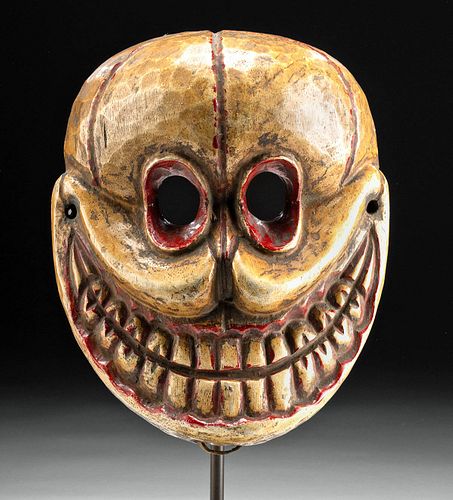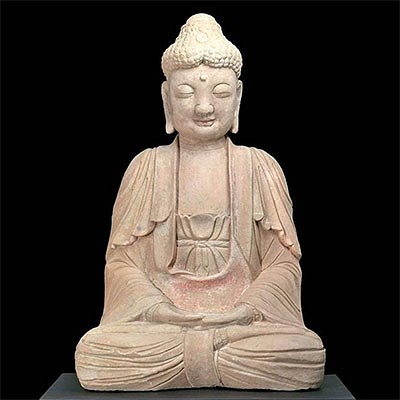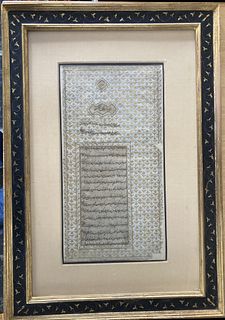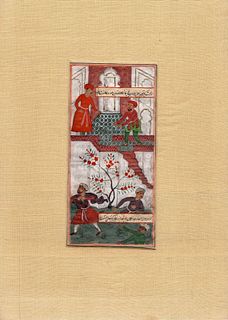19th C. Nepalese Painted Wood Skull Mask
Lot 73c
About Seller
Artemis Gallery
686 S Taylor Ave, Ste 106
Louisville, CO 80027
United States
Selling antiquities, ancient and ethnographic art online since 1993, Artemis Gallery specializes in Classical Antiquities (Egyptian, Greek, Roman, Near Eastern), Asian, Pre-Columbian, African / Tribal / Oceanographic art. Our extensive inventory includes pottery, stone, metal, wood, glass and textil...Read more
Categories
Estimate:
$4,000 - $6,000
Absentee vs Live bid
Two ways to bid:
- Leave a max absentee bid and the platform will bid on your behalf up to your maximum bid during the live auction.
- Bid live during the auction and your bids will be submitted real-time to the auctioneer.
Bid Increments
| Price | Bid Increment |
|---|---|
| $0 | $25 |
| $300 | $50 |
| $1,000 | $100 |
| $2,000 | $250 |
| $5,000 | $500 |
| $10,000 | $1,000 |
| $20,000 | $2,500 |
| $50,000 | $5,000 |
| $100,000 | $10,000 |
| $200,000 | $20,000 |
About Auction
By Artemis Gallery
Feb 18, 2021
Set Reminder
2021-02-18 10:00:00
2021-02-18 10:00:00
America/New_York
Bidsquare
Bidsquare : Exceptional Antiquities, Asian, Ethnographic
https://www.bidsquare.com/auctions/artemis-gallery/exceptional-antiquities-asian-ethnographic-6373
Museum-worthy examples of Egyptian, Greek, Roman, Etruscan, Near Eastern, Far East / Asian, Pre-Columbian, African / Tribal, Oceanic, Native American, Spanish Colonial, Russian, Fossils, Ancient Jewelry, Fine Art, so much more! Artemis Gallery info@artemisgallery.com
Museum-worthy examples of Egyptian, Greek, Roman, Etruscan, Near Eastern, Far East / Asian, Pre-Columbian, African / Tribal, Oceanic, Native American, Spanish Colonial, Russian, Fossils, Ancient Jewelry, Fine Art, so much more! Artemis Gallery info@artemisgallery.com
- Lot Description
Central Asia, Nepal, Himalayan region, ca. 19th century. A striking carved-wood dance mask depicting the face of a Citipati, a skeletal protector deity in Himalayan Buddhism, boasting a lustrous burnish, created by coating it in yak butter fat and charring it over a fire, and embellished in shades of caramel and crimson. An enormous Cheshire cat smile dominates this haunting visage, reaching the same plane of the ovoid eyes and displaying two rows of large teeth, carefully incised and set in red-painted gums. Sitting above the concave nose, his openwork eyes are positioned unnaturally close together and outlined with red borders. Two incised decorative striations outlined in red cross at the top of the head and travel down the face. Six drill holes, two at the bottom of the mask, two at the top, and one at each corner of his toothy grin, allow for the evocative vizard to be strapped to one's face. A slender strip of leather woven through the bottom drill holes also serves for this purpose. Size: 7.5" W x 9" H (19 cm x 22.9 cm); 13" H (33 cm) on included custom stand.
Despite their bulging eyes, gnashing teeth and overall frightening appearance, the Citipati protect the Dharma (Buddhist teachings) from forces of dejection and ignorance. Typically depicted in pairs, the skeletons or Citipati (also known as Chitipati) represent a pair of lovers known as the Lord and Lady of the funeral pyre, whose sacred skeleton dance symbolizes the eternal dance of death as well as the arrival at absolute consciousness. In the traditional performance of the Tibetan Skeleton dance at cemeteries, the two Dharmapalas (Protectors of Truth) are played by Monks. They are deities whose primary role is to protect the cemetery grounds. Beyond this, their presence signifies the ephemeral nature of this earthly world and reminds the audience members of their own mortality. The cult of the "Second Buddha," Padmasambhava, planted the seed for this practice through their rich mythological literature.
The Himalayan masking tradition is not as well-known as those from Africa or Southeastern Asia, and today some of the original information has been lost due to fading oral traditions. Masks like this one relate to indigenous, animist traditions that developed in the harsh, wild environment of the Himalayas, and so they are often representations of local spirits.
Provenance: private New York, New York, USA collection; ex-Josette Schulmann collection, Paris, France
All items legal to buy/sell under U.S. Statute covering cultural patrimony Code 2600, CHAPTER 14, and are guaranteed to be as described or your money back.
A Certificate of Authenticity will accompany all winning bids.
We ship worldwide and handle all shipping in-house for your convenience.
#162487Collection label on back of custom stand. Light scratches and abrasions on surface commensurate with age. Otherwise, excellent with nice remaining pigments.Condition
- Shipping Info
-
All shipping is handled in-house for your convenience. Your invoice from Artemis Gallery will include shipping calculation instructions. If in doubt, please inquire BEFORE bidding for estimated shipping costs for individual items.
-
- Buyer's Premium



 EUR
EUR CAD
CAD AUD
AUD GBP
GBP MXN
MXN HKD
HKD CNY
CNY MYR
MYR SEK
SEK SGD
SGD CHF
CHF THB
THB














